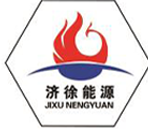
Dec . 04, 2024 16:41
Back to list
gas pressure reducing station
Gas Pressure Reducing Stations Ensuring Safety and Efficiency in Gas Distribution
Gas pressure reducing stations (PRS) play a crucial role in the safe and efficient distribution of natural gas and other gas forms. They serve as critical components within gas supply networks, ensuring that the high-pressure gas transported through pipelines is converted to a lower, usable pressure suitable for residential, commercial, and industrial consumers. This article explores the importance, functioning, and benefits of gas pressure reducing stations.
The Importance of Gas Pressure Reducing Stations
Gas is transported over long distances through high-pressure pipelines to ensure its efficient movement. However, the pressure at which gas is delivered to consumers must be significantly reduced to prevent damage to appliances and ensure the safety of users. PRS are specifically designed to manage this transformation, allowing for the safe distribution of gas within the required pressure range.
Moreover, PRS contribute to the overall integrity of the gas distribution system. They help in minimizing the risks associated with high-pressure gas, such as leaks or explosive situations, which could arise during transportation and distribution. By controlling the pressure, these stations ensure that gas flows safely and uniformly to end users.
How Gas Pressure Reducing Stations Work
The operation of a gas pressure reducing station primarily involves three significant components pressure regulators, safety devices, and measurement tools.
1. Pressure Regulators At the heart of a PRS are the pressure regulators. These devices are responsible for adjusting the high incoming pressure to a designated lower output pressure. Regulators work by using a spring-loaded mechanism that modulates the flow of gas based on the pressure differential. When gas enters the regulator, a diaphragm responds to the pressure and opens or closes the flow accordingly, ensuring that the downstream pressure remains steady.
2. Safety Devices Safety is paramount in gas distribution, and every PRS is equipped with safety devices such as pressure relief valves and lock-up mechanisms. These are designed to prevent overpressure situations that could lead to catastrophic failures. If the pressure exceeds safe levels, relief valves will automatically open to release excess gas and stabilize the system.
gas pressure reducing station

3. Measurement Tools Accurate measurement of gas flow and pressure is essential for operational efficiency. PRS are outfitted with various measurement tools, including pressure gauges and flow meters. These tools help operators monitor system performance and ensure that the gas is being delivered at the correct pressure to consumers.
Benefits of Gas Pressure Reducing Stations
The implementation of gas pressure reducing stations yields numerous benefits
- Safety By controlling the pressure of gas supplied to consumers, PRS significantly reduce the likelihood of accidents due to high-pressure gas leaks and explosions.
- Efficiency A well-maintained PRS ensures an efficient gas supply system, enabling gas utilities to optimize distribution network performance and reduce operational costs.
- Reliability With PRS in place, consumers can rely on a stable gas supply for their daily needs, ensuring comfort and convenience.
- Environmental Protection By minimizing leaks and ensuring efficient gas distribution, PRS contribute to reducing the environmental impact associated with natural gas supply chains.
Conclusion
Gas pressure reducing stations are indispensable for the safe, efficient, and reliable distribution of gas across various sectors. They play a vital role in environmental protection, safety enhancement, and overall operational efficiency within gas supply networks. As the demand for natural gas continues to rise, the importance of effective gas pressure management through well-designed PRS will only become more significant. Thus, investing in technology and infrastructure related to PRS is essential for maintaining a sustainable and safe energy future.
Next:
Latest news
-
Safety Valve Spring-Loaded Design Overpressure ProtectionNewsJul.25,2025
-
Precision Voltage Regulator AC5 Accuracy Grade PerformanceNewsJul.25,2025
-
Natural Gas Pressure Regulating Skid Industrial Pipeline ApplicationsNewsJul.25,2025
-
Natural Gas Filter Stainless Steel Mesh Element DesignNewsJul.25,2025
-
Gas Pressure Regulator Valve Direct-Acting Spring-Loaded DesignNewsJul.25,2025
-
Decompression Equipment Multi-Stage Heat Exchange System DesignNewsJul.25,2025

